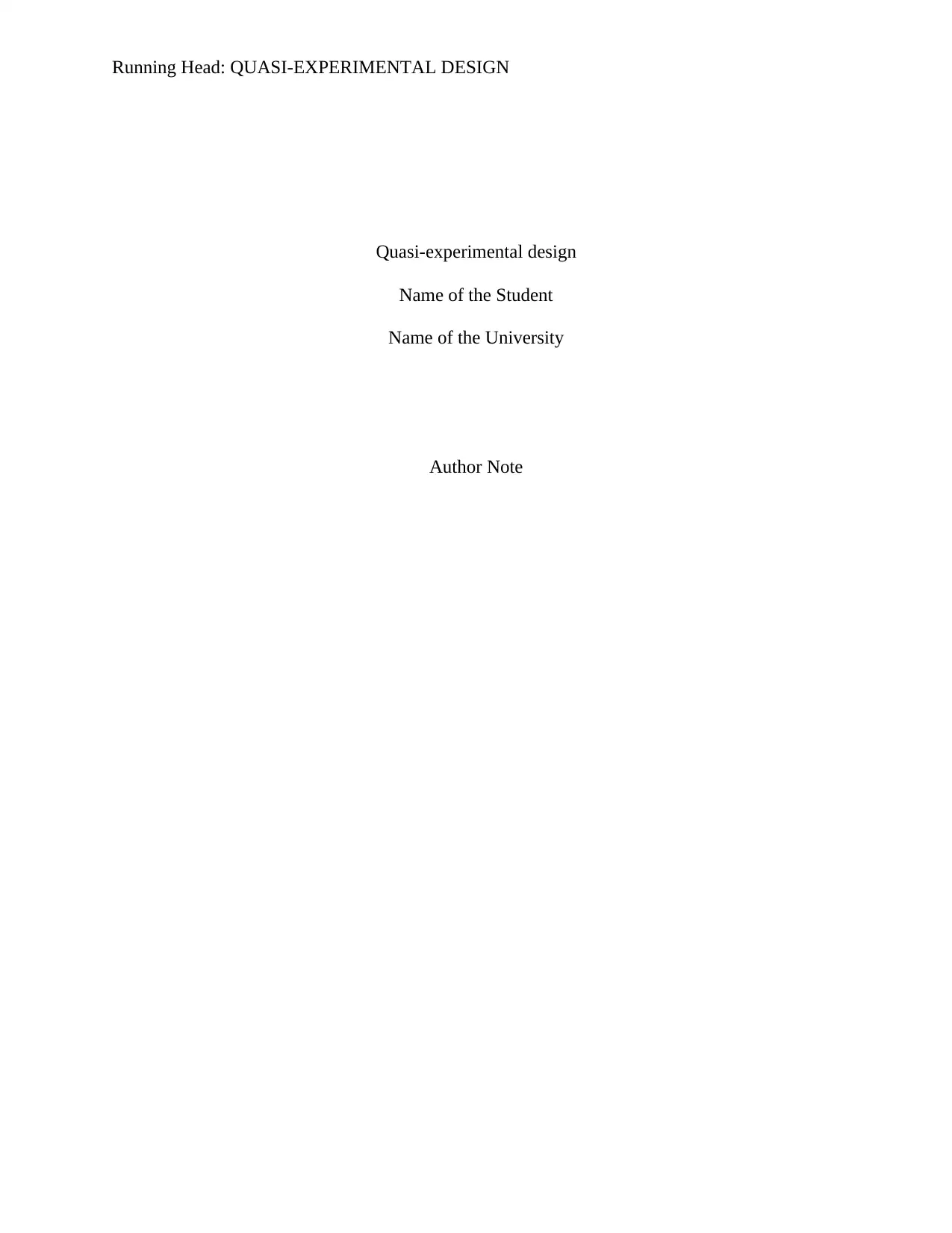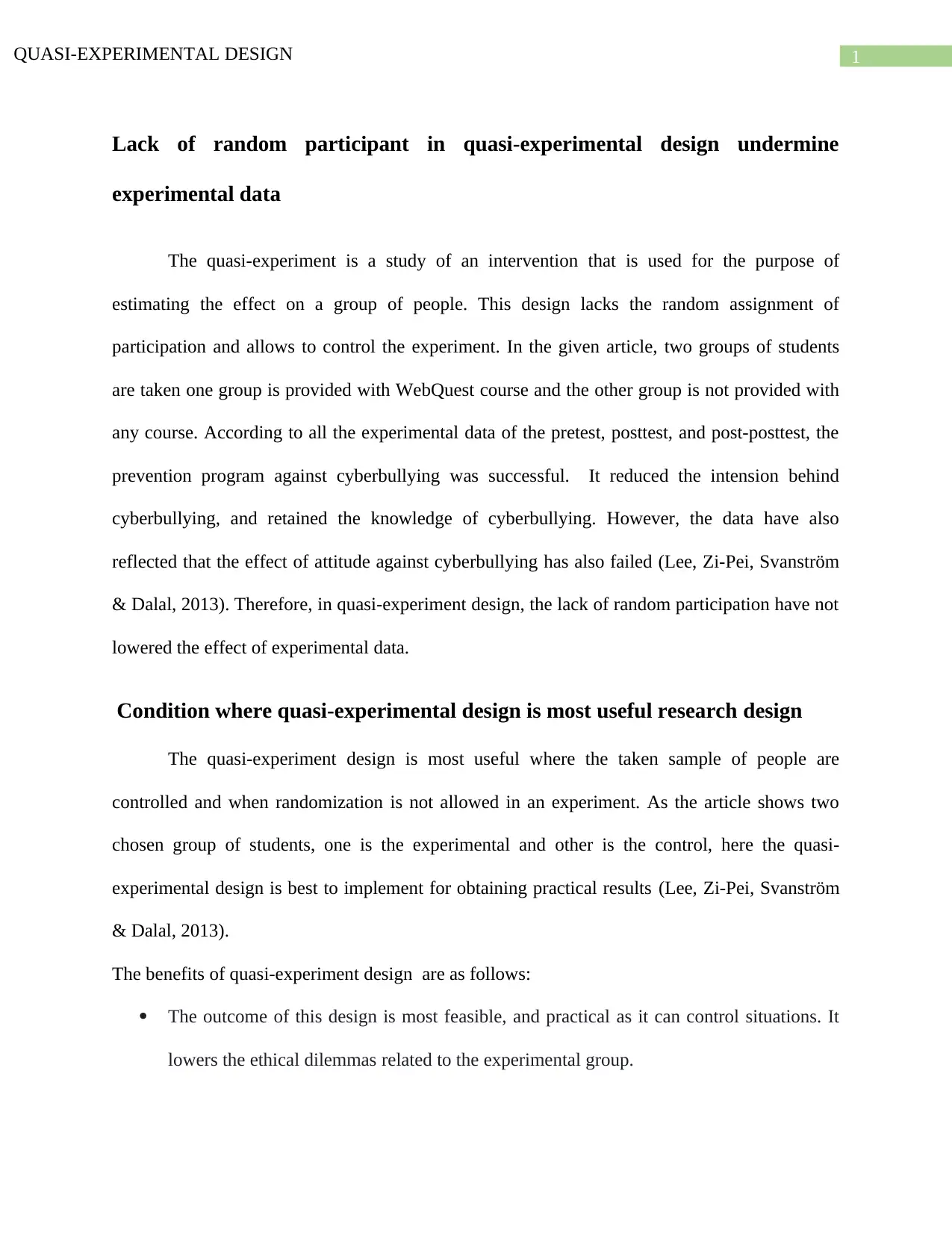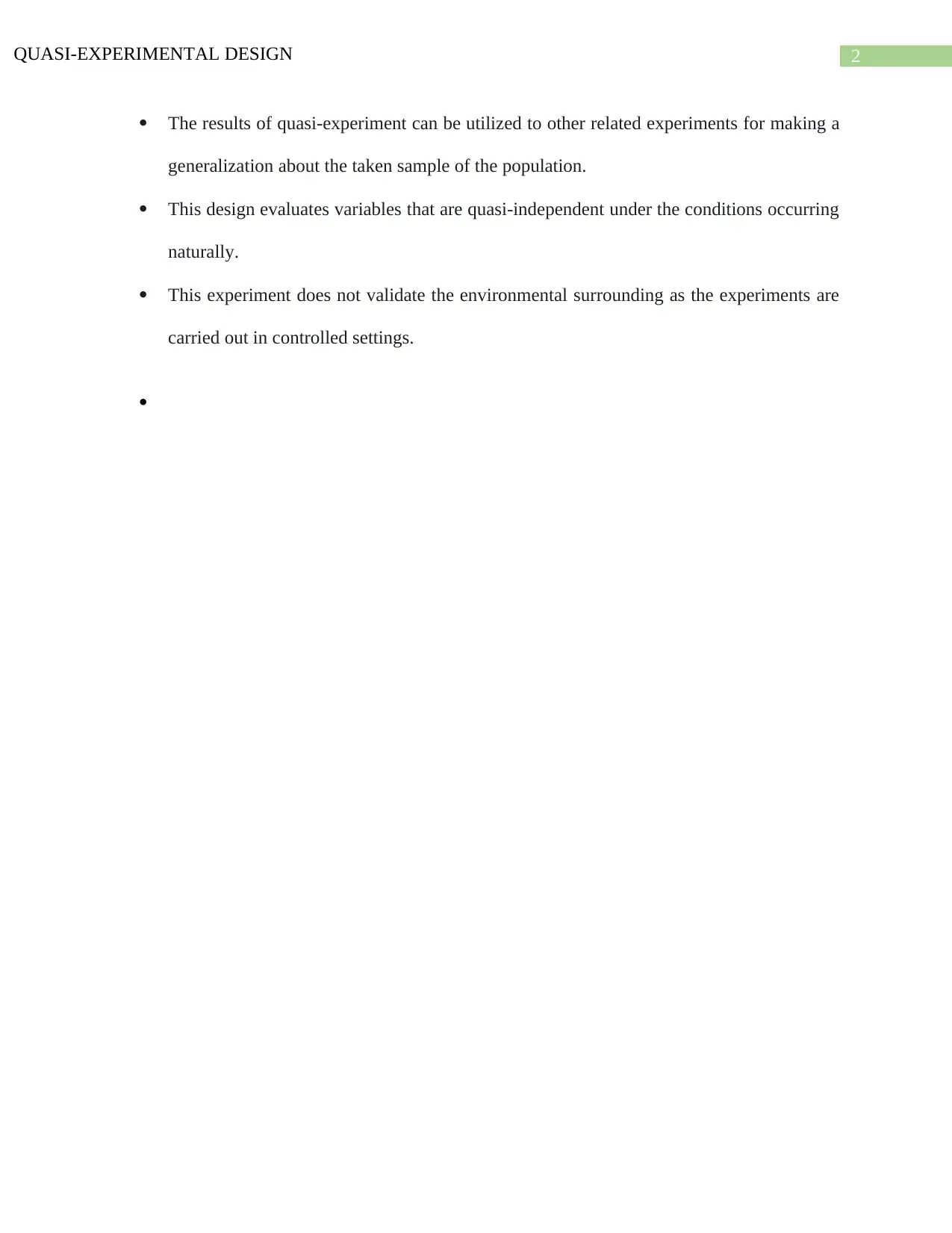Quasi-Experimental Design Analysis: Cyberbullying Study Evaluation
VerifiedAdded on 2022/10/19
|4
|397
|25
Report
AI Summary
This report analyzes a quasi-experimental design applied in a cyberbullying prevention study. The study investigates the impact of a WebQuest course intervention on students, utilizing pretest, posttest, and post-posttest data to assess the effectiveness of the intervention. The report highlights the study's findings, including the reduction in cyberbullying intentions but a lack of significant impact on attitudes. It discusses the advantages of quasi-experimental designs, such as their practicality and ability to control conditions, especially when random assignment is not feasible. The report also examines the ethical considerations and the potential for generalizing findings to other related experiments. The quasi-experimental design proves useful in obtaining practical results, particularly in situations where researchers cannot randomly assign participants to groups. This report provides a comprehensive overview of the study's methodology, results, and implications.
1 out of 4










![[object Object]](/_next/static/media/star-bottom.7253800d.svg)